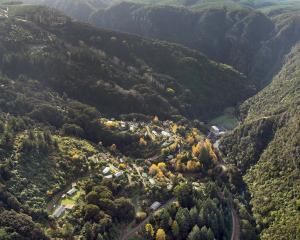The Clutha District Council has been given 12 months to find a new way to discharge backwash from its Stirling water treatment plant, as the wastewater system at Fonterra's Stirling plant can no longer take it.
The council voted last week to apply for a new resource consent from the Otago Regional Council for its Stirling effluent.
Its treatment plant supplies water to Stirling township, Benhar township, Cherry Lane in North Balclutha, and the South Bruce rural water scheme, covering a 5300ha area.
Clutha District Council district assets manager Jules Witt said staff would work with Fonterra and the ORC to develop a different way of discharging backwash.
The consent application would be based on the pre-2000 system of discharging backwash to the Matau branch of the Clutha River but further treatments to the dirty water could be needed before it entered the river.
Since 2002, the council has been discharging backwash from the Stirling plant into the nearby Fonterra waste treatment system, where it was treated and discharged at no cost to the council.
Human sewage from the Fonterra plant at Stirling flows into the council's wastewater system in Stirling for which Fonterra has paid the appropriate sewerage rates, and this was not expected to change. Earlier this year, Fonterra told the council the volume flowing through the company's waste treatment plant was approaching its maximum capacity and had been regularly exceeding its consented limit.
It asked the council to "formulate an alternative solution" for the discharge within 12 months.
The $12 million membrane biological reactor plant at Fonterra's Stirling plant's capacity had suffered multiple consent non-compliances in the 2010-11 season due to excessive wastewater discharge volumes.
Before 2000, the Stirling plant filter backwash and clarifier effluent (solids from the settling tank) were discharged directly into the Clutha River (Matau branch), as most of the council's water treatment plants discharged their effluent into natural waterways.
When the discharge consent expired in 2000, the council diverted the Stirling plant's effluent into the Stirling sewerage system rather than renew the consent, but this overloaded the oxidation pond and also created additional pumping costs as the average water treatment backwash flow is 160m3/day, compared to the average sewage flow of 93m3/day.
Fonterra has offered council technical and consenting support.







